Meet the remarkable student scholars who represent TXST’s Run to R1 doctoral investment
By Matt Joyce
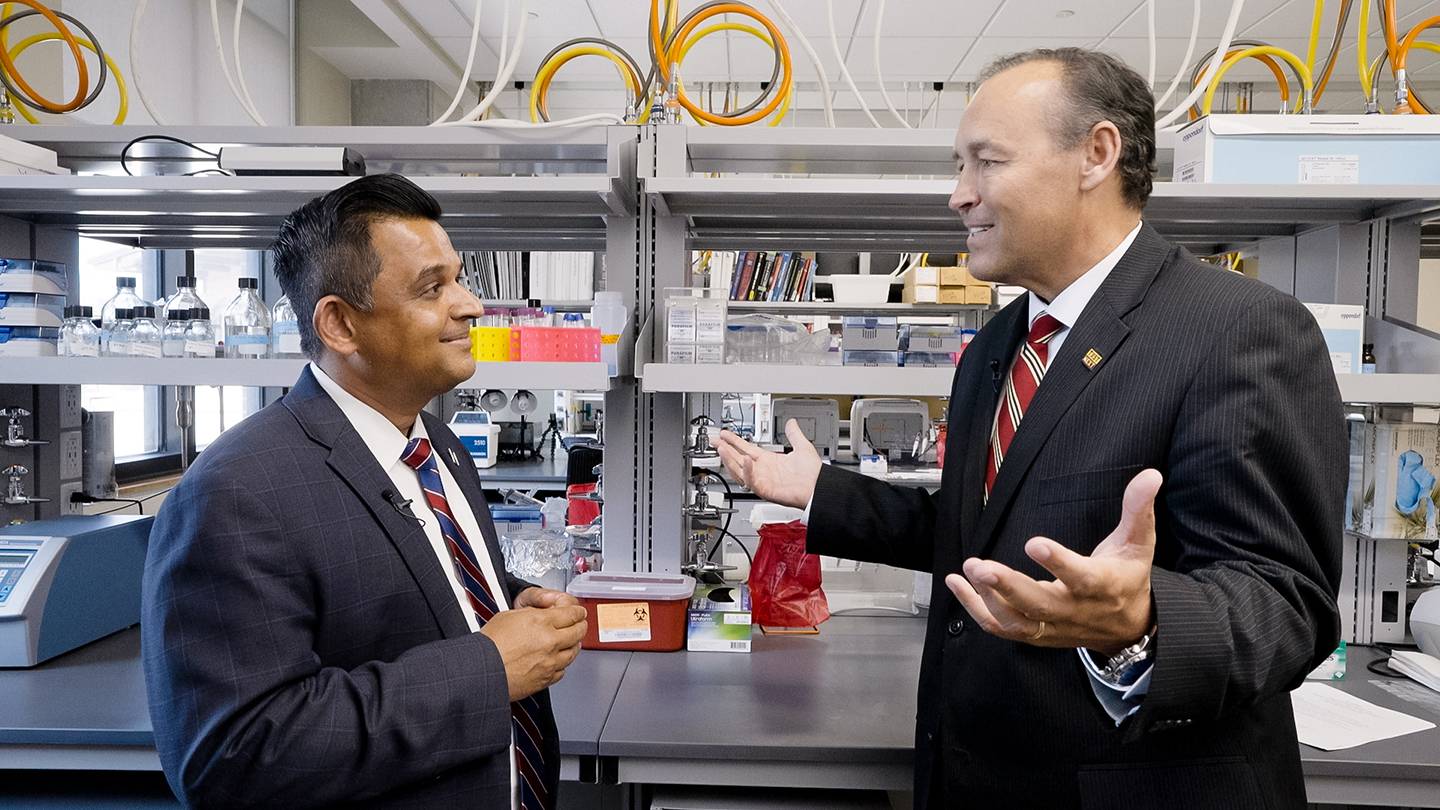
Across Texas State University, a new crop of Ph.D. students is diving deep into research on subjects ranging from coral immunity to immersive media and sustainable concrete.
The growth in doctoral research activity is a product of TXST’s Run to R1, an initiative to achieve the highest level of research status.
Starting in the Spring 2023 semester, the university has invested more than $12 million to recruit 100 new Ph.D. students. As a result, enrollment in TXST’s research doctoral programs has grown by nearly 40% in recent years to 542 students this fall.
“By the time the Carnegie Foundation classifies us as R1 in 2027, we hope we will be graduating about 75 to 100 Ph.D. students every year,” said Dr. Shreekanth (Shreek) Mandayam, vice president for research.
Mandayam pointed to the example of Brandon Alexander Burtchell, who started his doctoral studies in the Department of Computer Science in January.
“He was a computer science major here, and as an undergrad he worked on self-driving cars,” Mandayam said. “He could have gone anywhere in the country for his Ph.D., but we retained him right here at Texas State with a competitive assistantship to work in Dr. Martin Burtscher’s lab on high-speed data compression.”
The $12 million supports “R2R1” assistantships that cover tuition and pay a stipend for teaching or research for three years. The funding is available to students across TXST’s doctoral programs after initially being rolled out specifically for students in the departments of Computer Science, Aquatic Resources and Integrative Biology, and Materials Science, Engineering, and Commercialization.
TXST currently offers 14 doctoral programs and has proposed adding 11 more starting next fall, pending approval by the Texas Higher Education Coordinating Board. Mandayam said additional investments are planned for Ph.D. programs and expenditures for postdocs and other research.
Here we meet seven doctoral students supported by TXST’s Run to R1 doctoral investment who are already making an impact with their research.
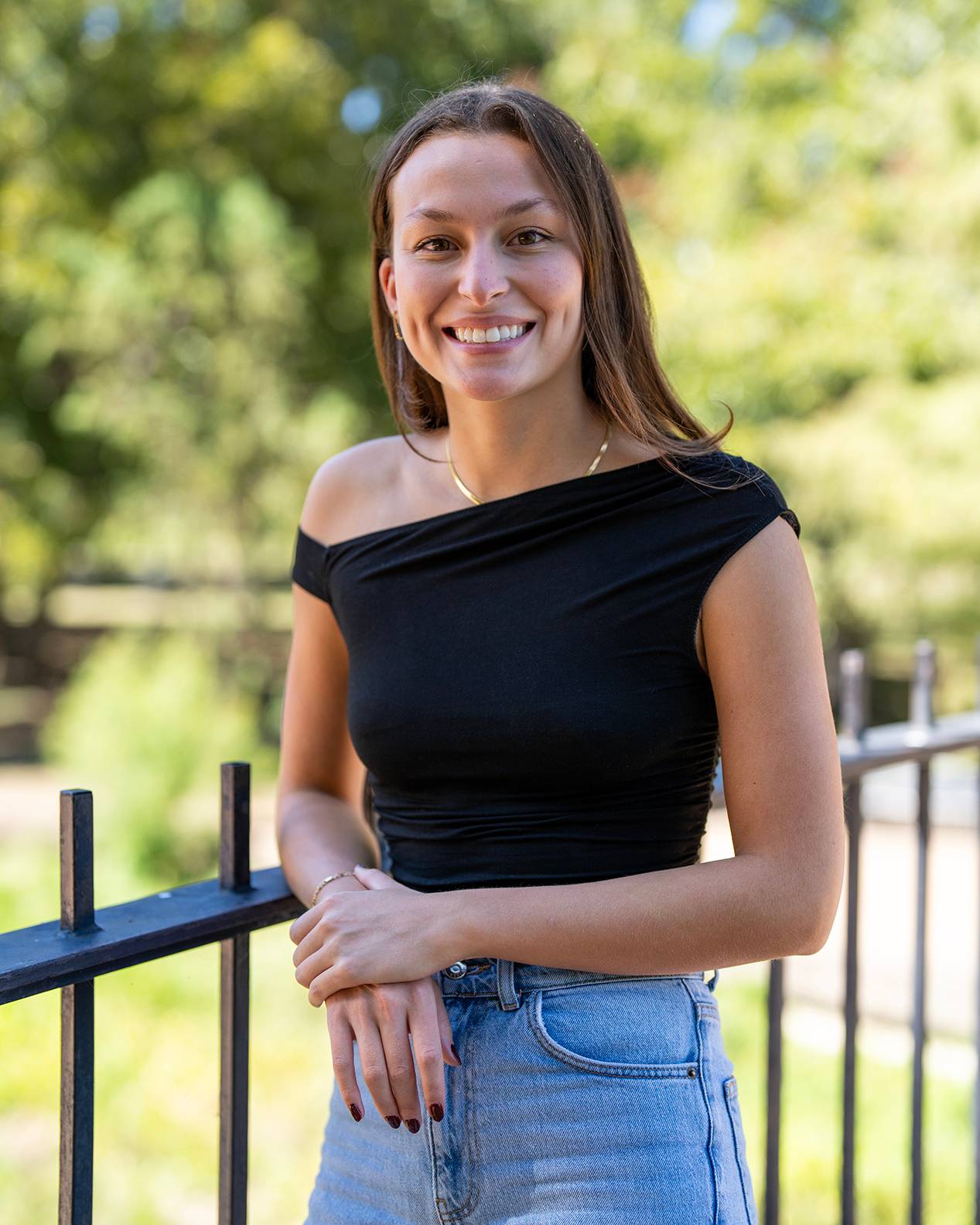
Isabella Changsut
Aquatic Resources and Integrative Biology
Relevant research opportunities first drew Isabella Changsut away from her home in New Jersey for graduate school at Texas State University. But after completing her master’s degree, Changsut said it was the Run to R1 scholarship support that convinced her to stay.
Changsut researches a temperate coral called Astrangia poculata, or northern star coral, with a focus on immunity and disease dynamics.
“There are several coral diseases making their way through the world right now, and it’s a huge threat to coral reefs worldwide, but specifically in the Caribbean,” Changsut explained.
The northern star coral serves as a good model organism to study coral immunity because it’s healthy in the wild and easy to nurture in a lab.
At Dr. Lauren Fuess’ Symbiommunity Lab on the fifth floor of Ingram Hall, Changsut exposes northern star coral to sublethal doses of pathogens to study whether they have the potential to act like a vaccine and could potentially be used to treat corals against diseases.
In spring 2022, while Changsut was working on her master’s degree, the National Science Foundation awarded her a Graduate Research Fellowship. She says the fellowship gave her financial flexibility in searching Ph.D. programs nationwide. But after also receiving Run to R1 funding, TXST proved to be the best option.
“Dr. Fuess has a really robust lab established here, and that includes our aquarium system, which is really nice for running infection trials,” Changsut said. “It really came down to the resources and Dr. Fuess as a mentor. If you have a driven principal investigator, then you’re bound for success as well.”
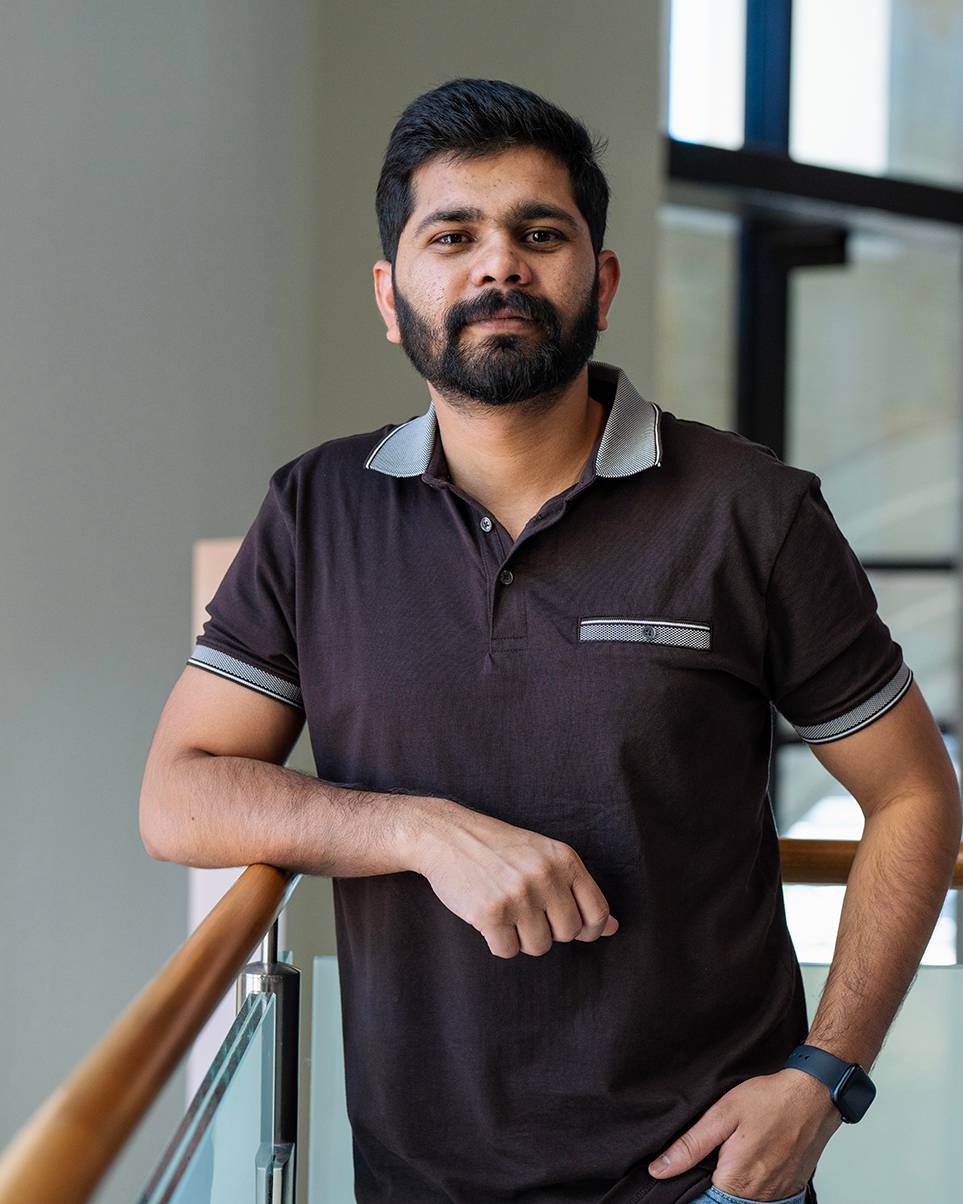
Muhammad Usama Salim
Materials Science, Engineering, and Commercialization
After completing his master’s degree in Turkey, civil engineering student Muhammad Usama Salim was looking for a doctoral program with a multidisciplinary approach that incorporated business.
Usama found what he was looking for in TXST’s Materials Science, Engineering, and Commercialization program.
“My research focus is on sustainable construction materials, particularly geopolymer concrete and supplementary cementitious materials to promote sustainable construction practices,” explained Usama, who’s originally from Pakistan.
Usama enrolled in the MSEC program in fall 2022 as a doctoral assistant and received Run to R1 funding starting in spring 2023. Since then, he’s been working with Dr. Carlos Moro, an assistant professor in the Department of Engineering Technology, to research geopolymer materials that are made of industrial byproducts activated by alkaline solutions. He further aims to reduce the need for mining aggregates by testing the use of recycled and electronic waste aggregates.
“The Run to R1 help at Texas State is helpful,” Usama said. “In comparison with the other universities even in many foreign countries, the scholarship is more. It covers the tuition fee, which allows me to manage my finances in a better way.”
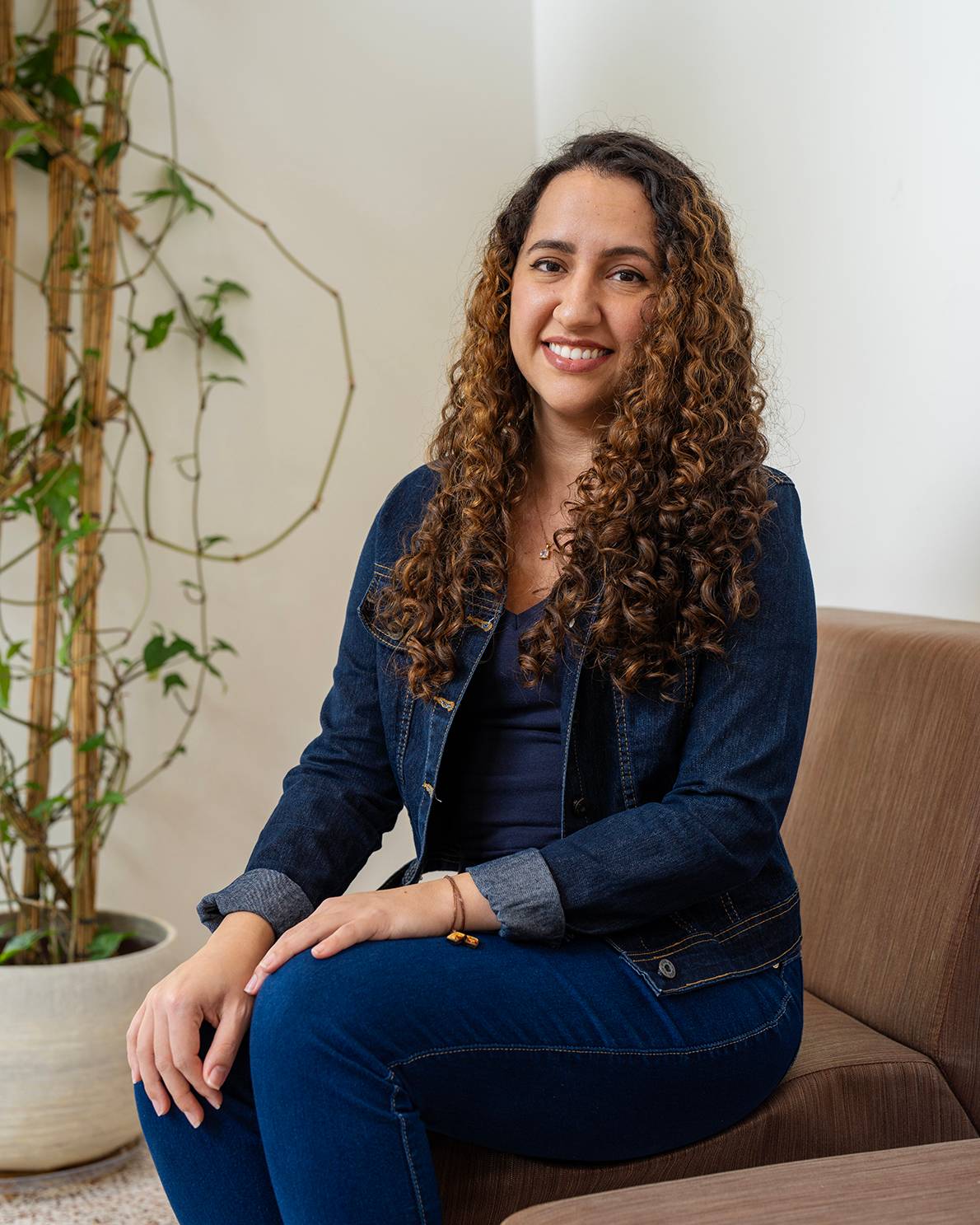
Myllena de Almeida Prado
Computer Science
Myllena de Almeida Prado moved from her home city of Brasília, Brazil, this May to pursue her doctoral research at the TXST Department of Computer Science, focusing on image quality in immersive media.
Working with her advisor, Dr. Mylene Farias, who’s also from Brazil, Prado is researching light field images, which enhance immersive media. With a device like virtual reality glasses, light field images reproduce the life-like perspective of changing the angle of your head to see around an object.
Transmitting light field images causes them to be compressed and decompressed, Prado explained, which can hurt the image quality due to distortion and noise.
“My research focuses on predicting the quality of light field images using deep learning algorithms,” Prado said. “This could give us more control of image quality for immersive media, and then the quality of experience for the viewer will be better.”
Prado said TXST’s computer science infrastructure and industry connections are beneficial to her research. As a Run to R1 doctoral student, the financial support makes it all possible.
“Here in Texas, I have a lot of opportunities that I don’t have in Brazil,” she said. “In Brazil, I worked full time during my undergrad, and I saw how hard is to also develop the research. The financial help allows me to really focus on my research and be able to have this experience to study.”
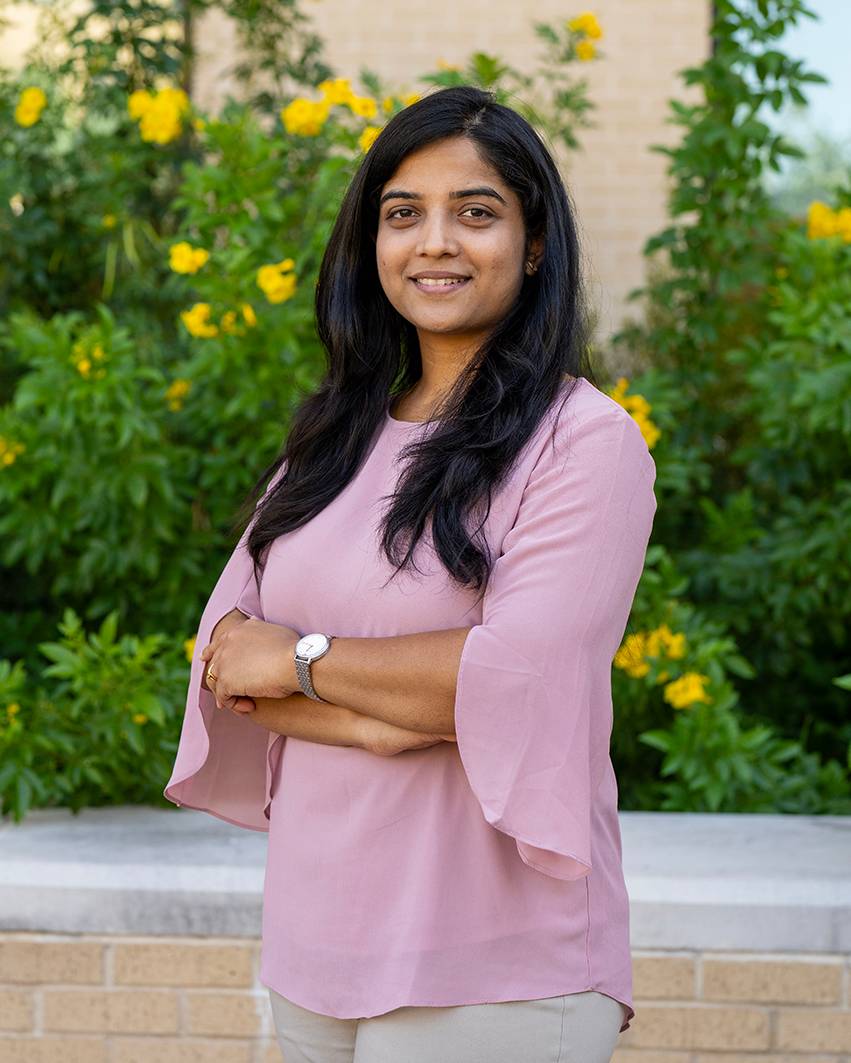
Asmita Mankar
Materials Science, Engineering, and Commercialization
Conducting doctoral research comes with a certain amount of pressure, said Asmita Mankar, a TXST Run to R1 Ph.D. student in Materials Science, Engineering, and Commercialization.
“Scholarship support allows me to focus on studies and devote time to lab research without worrying about tuition fee and living expenses,” Mankar said. “I would always choose a well-funded Ph.D. program over any Ivy League.”
For her Ph.D., Mankar is researching construction materials, including the development of ultra-high-performance concrete. Her research includes working on a project funded by the Texas Department of Transportation with her advisor, Dr. Anthony Torres, to develop concrete mixes for bridges with improved mechanical properties and increased durability.
“As you know, Texas is a place where infrastructure development is always happening,” she said.
Mankar, who completed her master’s in structural engineering in her home country of India, said she chose Texas State in part because of the business aspect of the MSEC program and the connections with Austin-area industry.
“I’m doing the research and I’m going to learn, but after I learn, I will be able to commercialize it and someday I can own my own research,” she said.

Jill Zipperer
Aquatic Resources and Integrative Biology
Jill Zipperer decided to pursue her doctorate in biology after teaching fifth grade in Dripping Springs for six years. During that time, she also earned her master’s degree in middle school science education and became a Hays County Master Naturalist.
At Texas State, Zipperer’s doctoral research incorporates her interest in STEM education and women’s experiences in the field of science.
Through interviews and questionnaires, Zipperer aims to compare the experiences of female students taking a biology study abroad trip to Ireland and female students taking a new science interpretation class.
“My research will center around social science topics, such as the women’s perceptions, values, and appreciation of science within the community; their comfort levels in regard to serving as science communicators; and their experiences of cohesion as part of their program’s scientific community,” she said.
Zipperer said it was a tough decision to leave behind the classroom as a teacher, but the opportunity to study with Dr. Kristy Daniel in the Daniel-Biology Education Research Group at TXST was worth it. The Run to R1 funding was also a big factor.
“It’s exciting because I have the opportunity to pursue research that I may not have had otherwise,” she said. “I already knew I wanted to come to Texas State but knowing that we have that support from the university really solidified the decision.”

Brandon Alexander Burtchell
Computer Science
Brandon Alexander Burtchell was one semester into his master’s degree studies in Texas State’s Department of Computer Science when the opportunity to apply for the Ph.D. program as a Run to R1 student presented itself.
Also an undergraduate degree-holder at TXST, Burtchell jumped at the chance and is now conducting doctoral research on compression algorithms with his advisor, Dr. Martin Burtscher, in the Efficient Computing Lab.
Burtchell said one of their research projects aims to help transmit valuable data from satellites that were launched decades ago. The older space probes have older hardware that’s less efficient.
“You don’t have a fast processor, and you don’t have a lot of space to store the data you’re collecting,” he said. “You need to stream it back to Earth, but you have limited bandwidth. The idea is if we can compress that data on the actual satellite, hopefully quickly, and using those limited resources on the satellite, we would have less to have to stream back to Earth, and therefore we’d be able to collect more data.”
As Burtchell considers a career with a national lab or in private industry, the Run to R1 support has broadened his horizons. He said he has also benefitted from the robust mix of doctoral students in the computer science department.
“I think just having more people to talk to and more people with different experiences in the same class is a nice side effect of this Run to R1 program,” he said.
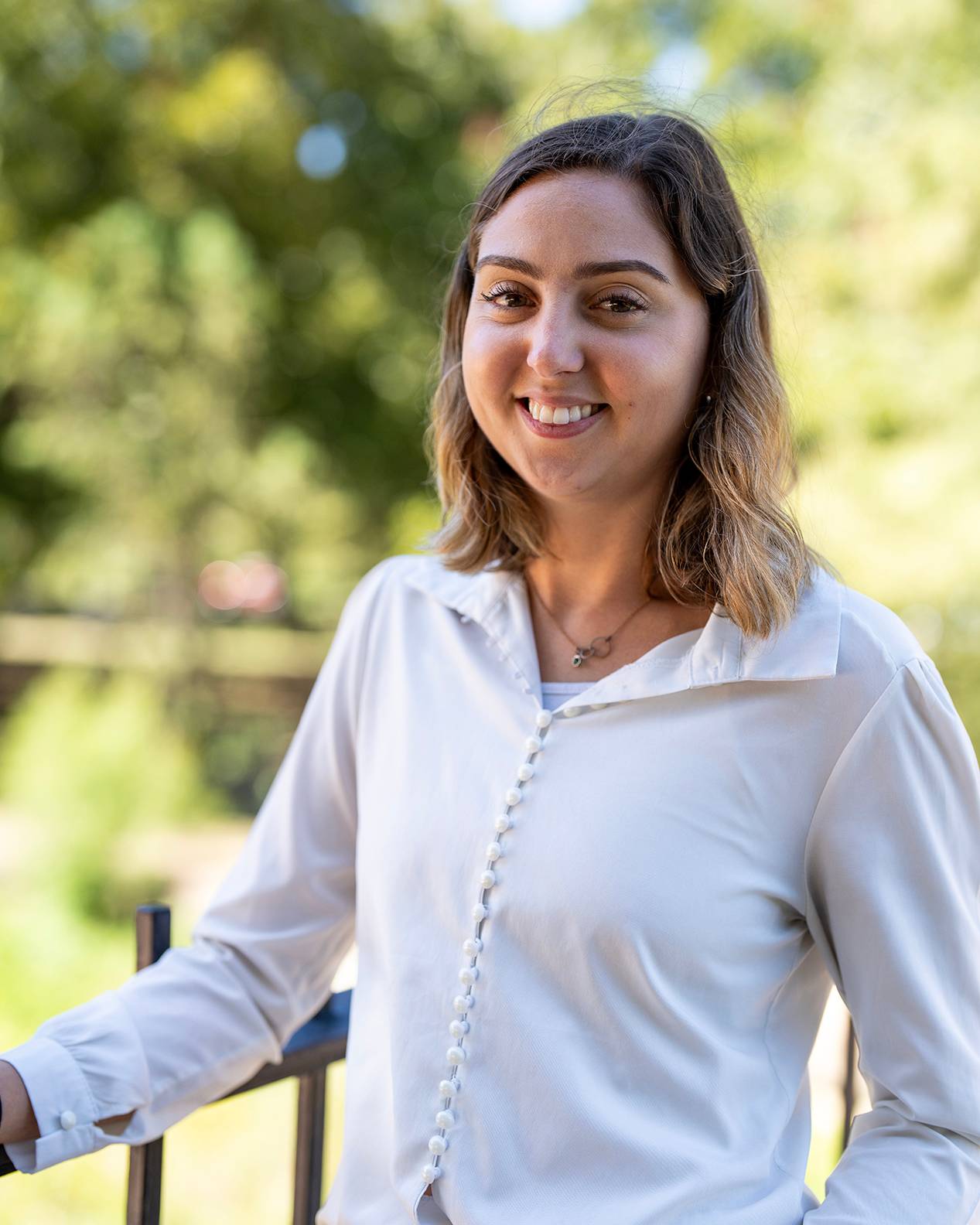
Sofia Diaz de Villegas
Aquatic Resources and Integrative Biology
Sofia Diaz de Villegas thought she would have to go elsewhere to pursue her Ph.D. after earning a master’s degree in biology at Texas State this year. A Run to R1 scholarship and the opportunity to continue her studies with Dr. Lauren Fuess’ Symbiommunity Lab kept her in San Marcos.
“The scholarship was instrumental,” Diaz de Villegas said. “I would’ve tried looking elsewhere for better funding. But when we found out about the Run to R1, I decided I was going to stay and continue doing my research. It’s super beneficial because I already have a good starting point here.”
Her research focuses on how heat stress impacts sea anemones. Anemones are similar to coral but easier to study. She aims to apply her findings to mitigating the damage of extreme heating events on coral reefs.
“I’ve found that prior heat stress increases disease susceptibility in anemones,” Diaz de Villegas explained. “My dissertation will look further into the molecular mechanisms that are driving that increased disease susceptibility. My hope is that we can identify when they are the most susceptible so that we can target certain mitigation efforts. If we can predict when corals are going to get a disease, then we can treat them faster and better.”